21st May - 27th May
Partner Company: Bittersuite
Brief: Re-design the acoustic properties of a physical space
Group: Ula Rodakowska, Sebastian Ervi, Kate Chernysheva
Partner Company: Bittersuite
Brief: Re-design the acoustic properties of a physical space
Group: Ula Rodakowska, Sebastian Ervi, Kate Chernysheva
REFLECTION
Last week, we presented something that we made, but couldn't define what it was. And while it was very interesting and we had a few thoughts on how to develop it, we still couldn't forget what John and Alaistair told us about the space that we created between people. We really liked this notion of a metaphorical, rather than actual physical space. Therefore, we decided to let ourselves explore it further in our own time. Furthermore, this week seemed to be quite busy for us all so we spent it all on research and thinking.
Melodie mousset & edo fouilloux: The Jellyfish
During our exploration day in London visiting different exhibition we found a sound VR experience at the Zabludowicz collection, where we went to see the exhibition recommended by John and Alaistair. The experience took place in a soundproof room created from sponges. When you put the goggles on, enter a world of jellyfish that change with sounds. It responds differently to each sound, a clap, shout, stomp, whisper, etc. It became bigger the louder you are and changed colour. It was a very interesting, immersive experience. However, we found ourselves asking the 'so what?' question. Yes, there are jellyfish and it's amazing, but what does it tell us? In a way, we could relate to it because we also had the 'so what?' question hanging over us with our own experience we made. Nevertheless, we were very happy to experience this and felt very inspired to get back to work.
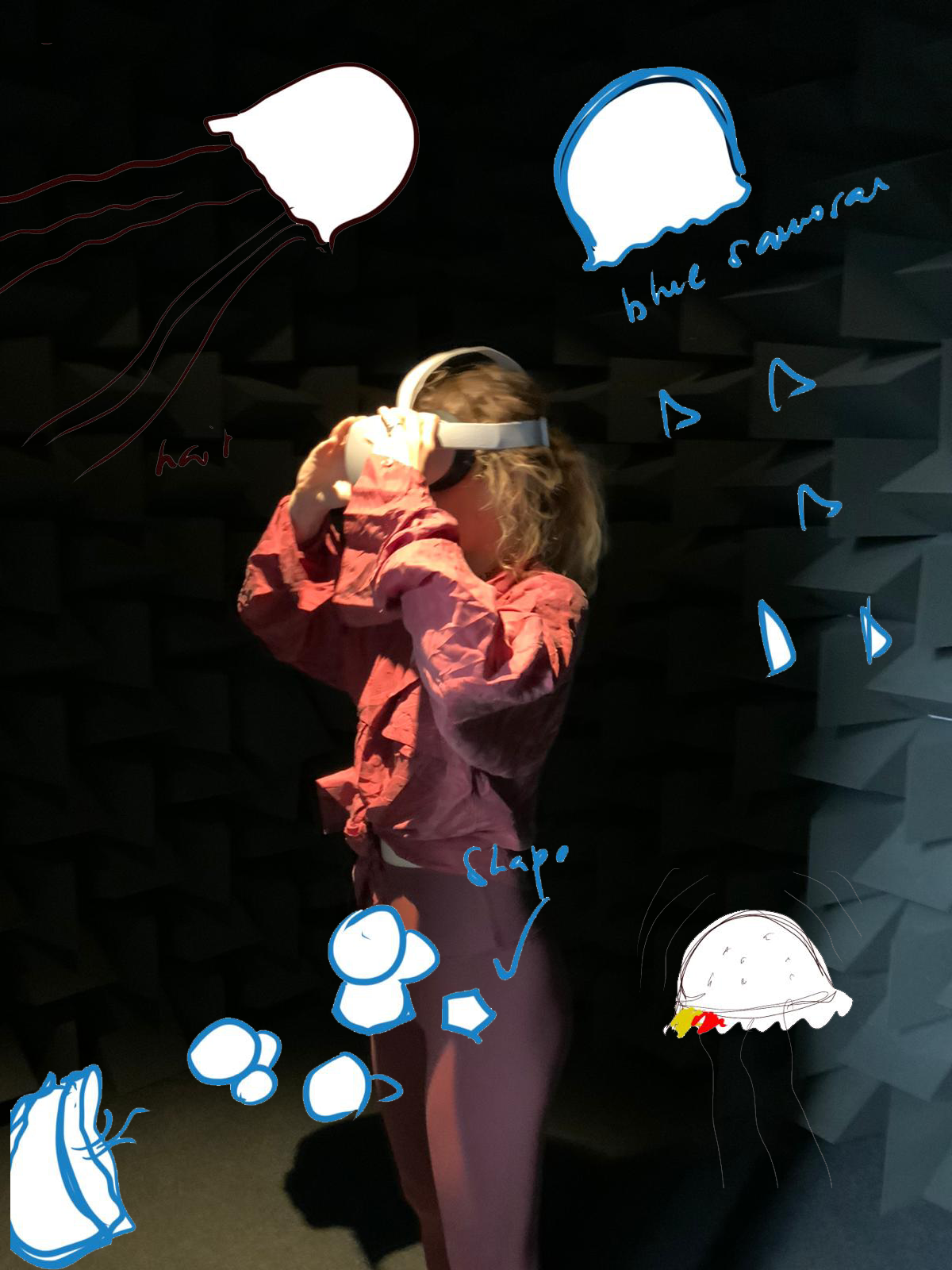
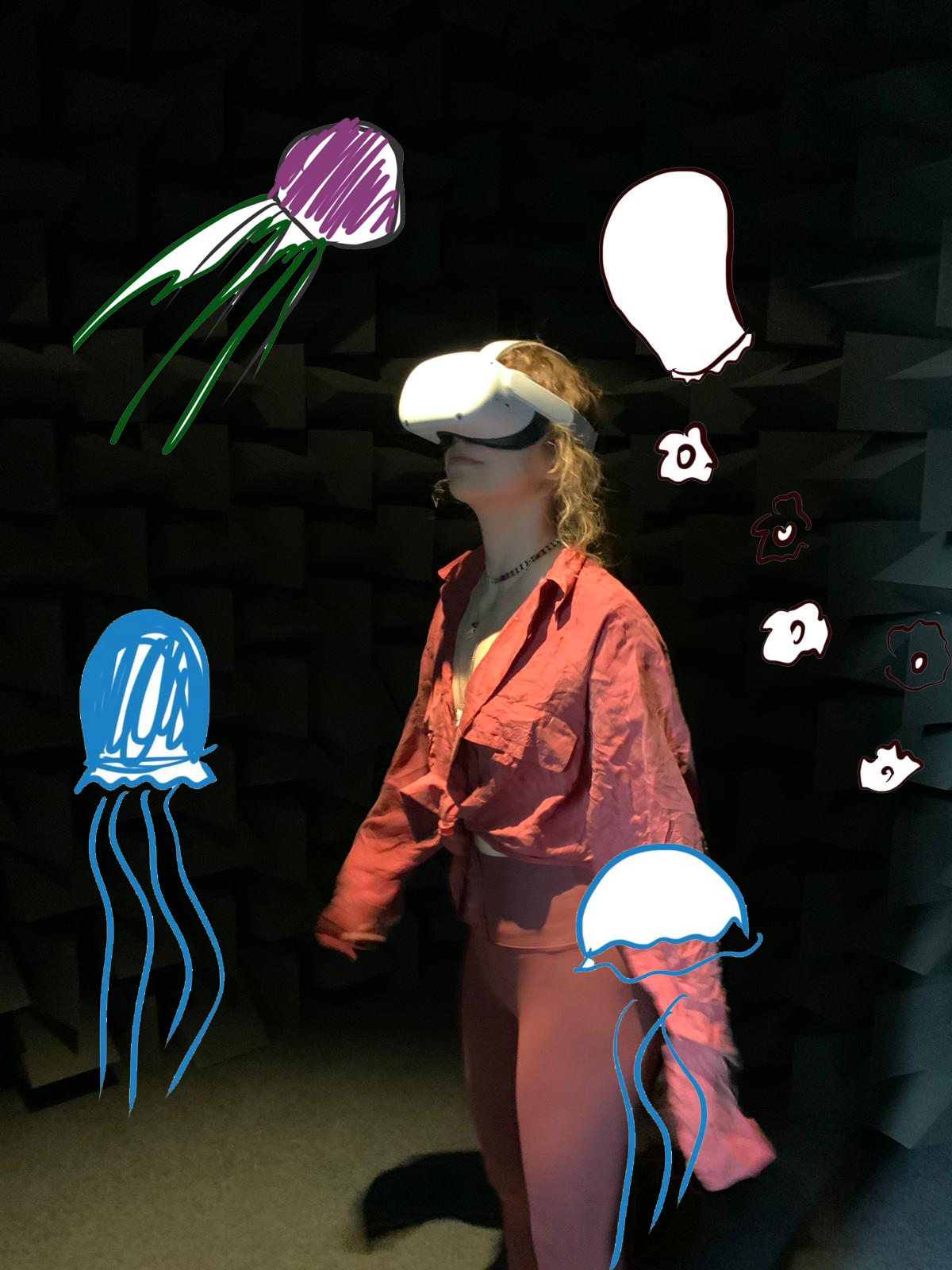
Ula doing the experience + the sketches I made while Ula explored the experience and guided me through what she sees. Photos and Sketches by Kate, edit by Ula.
OUR AIM
Another aspect that we wanted to focus on this week was identifying and formulating the aim of our project. We felt like we needed an anchor that we could come back to in case we get lost in our own thoughts to remember what we are trying to achieve. We wanted our experience to challenge people's perceptions and show them how much more there is to a simple interaction that hides so many layers. For example, behind a simple conversation, which we were trying to achieve last week, there are emotions, thoughts, background noise, etc. As a result, we shaped our aim to be:
To challenge our perceptions and sensory inputs by stripping experiences (interactions) into comprehensible multi-dimensional layers in order to allow for a deeper understanding, realisation and fresh perspective of it
Personal space: RESEARCH RESEARCH RESEARCH
Following from our feedback last week, where we created a mysterious space between two people, we were very interested in going deeper into this concept of metaphorical space. Then, Ula made an interesting suggestion by introducing us to the concept of personal space that people have, which is very unique. It is physical, but it is also flexible and different from person to person and something that doesn't have very clear boundaries. We decided to dive deeper into this topic and found a reading "The consideration of personal sound space: Toward a practical perspective on individualized auditory experience" by E. Fluegge. It explored different notions of earworms, personal sound, sound space ownership, etc. which immediately inspired us. Furthermore, we decided to create a survey with open-ended questions to send around, to get a better perspective on what people think personal space is.
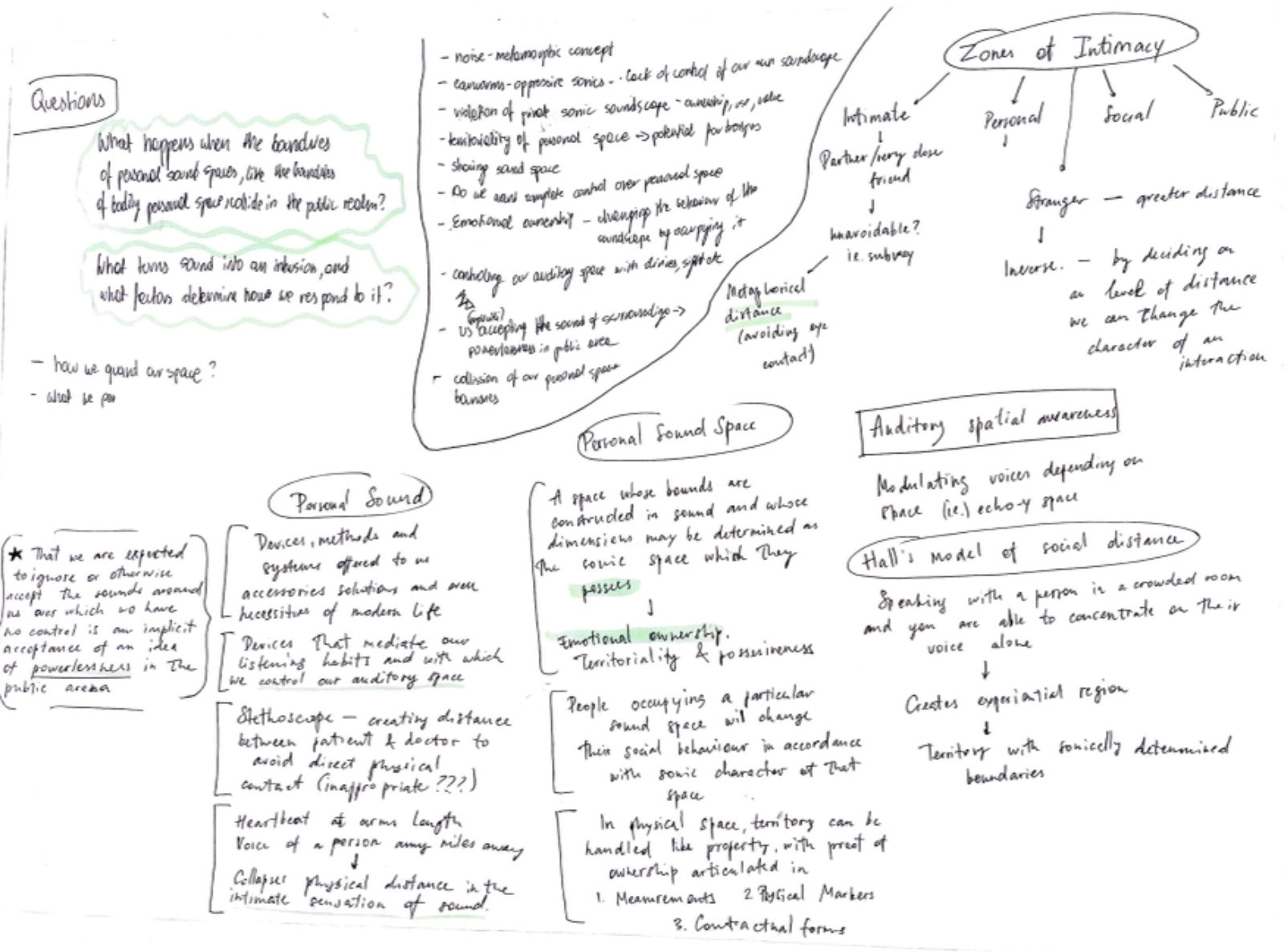

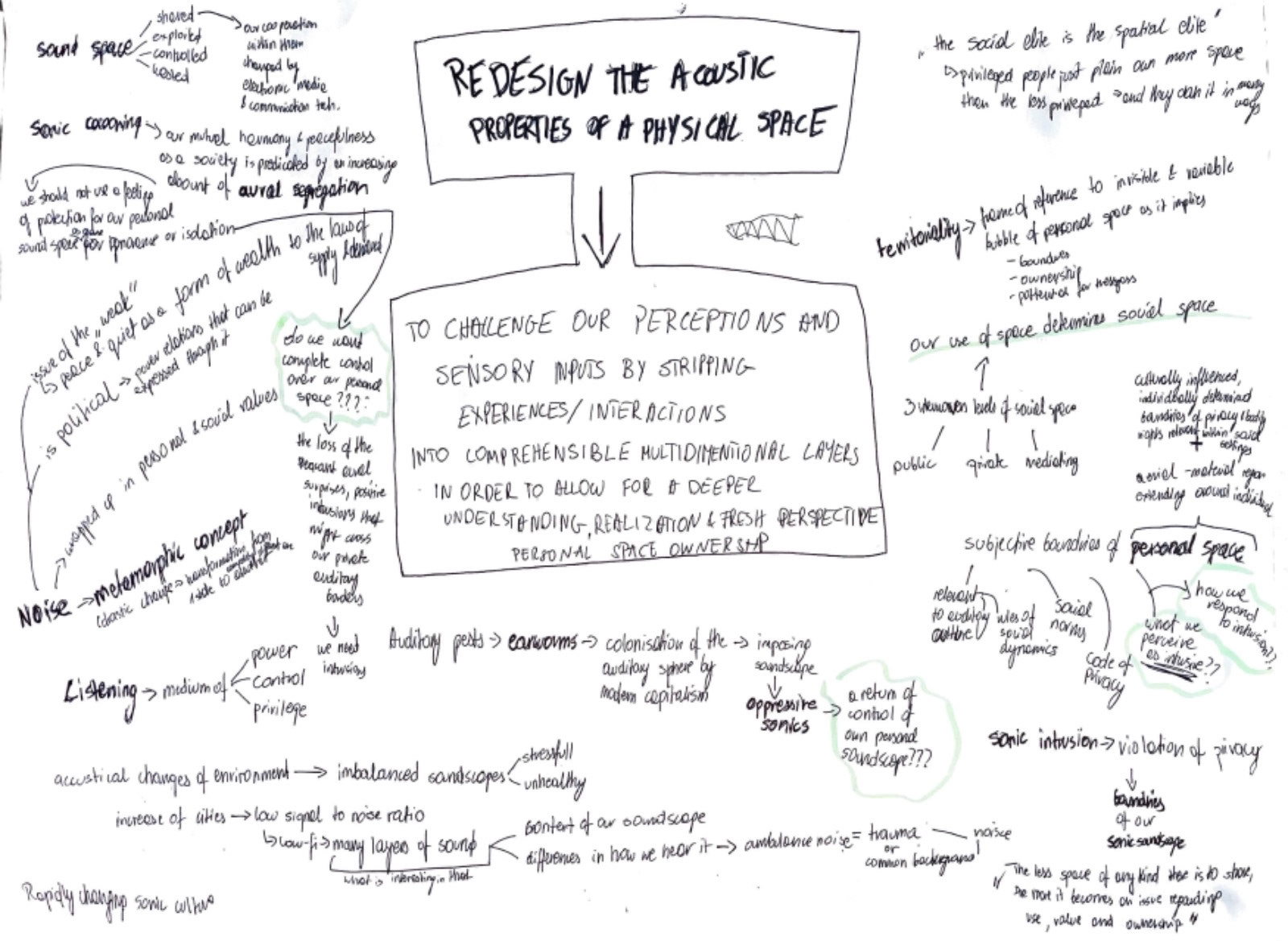
Our research we gathered for the presentation. Developed collaboratively.


Screenshots of our survey. Taken by Kate, survey developed collaboratively.
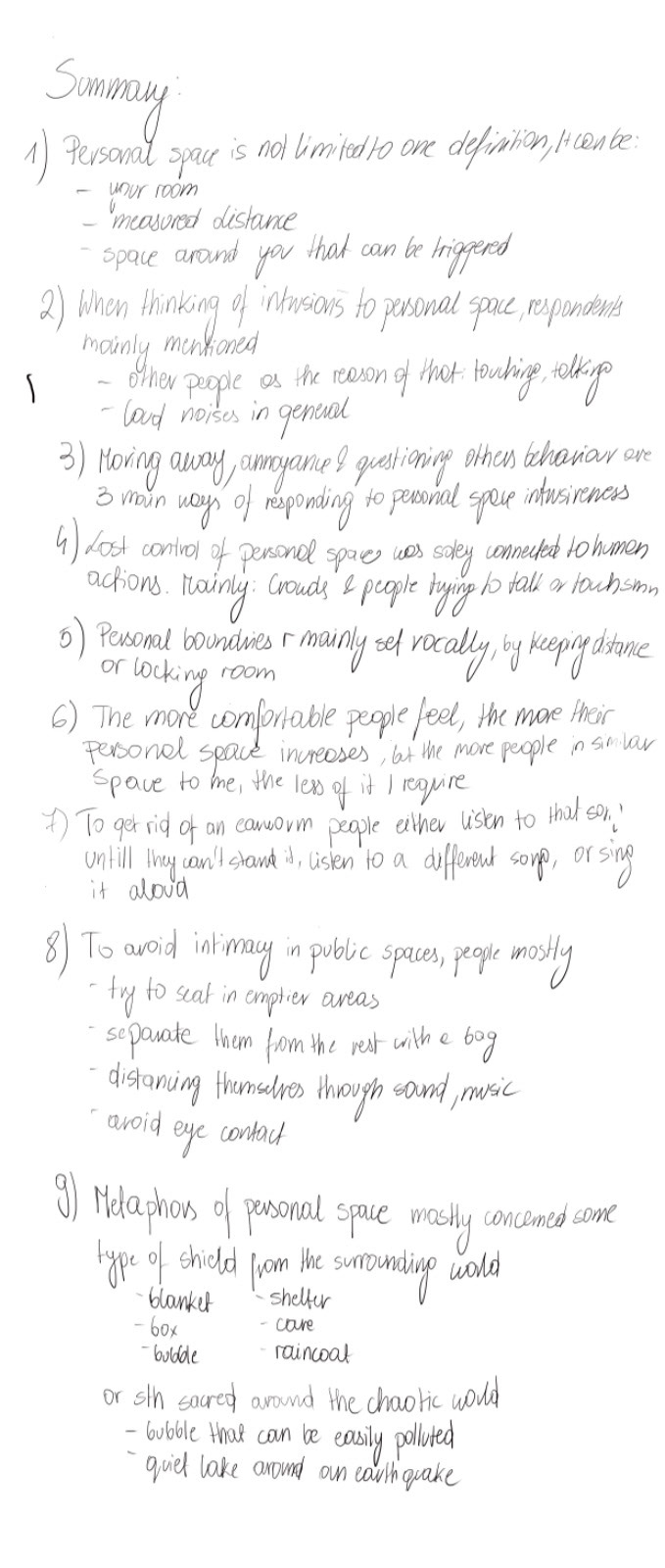
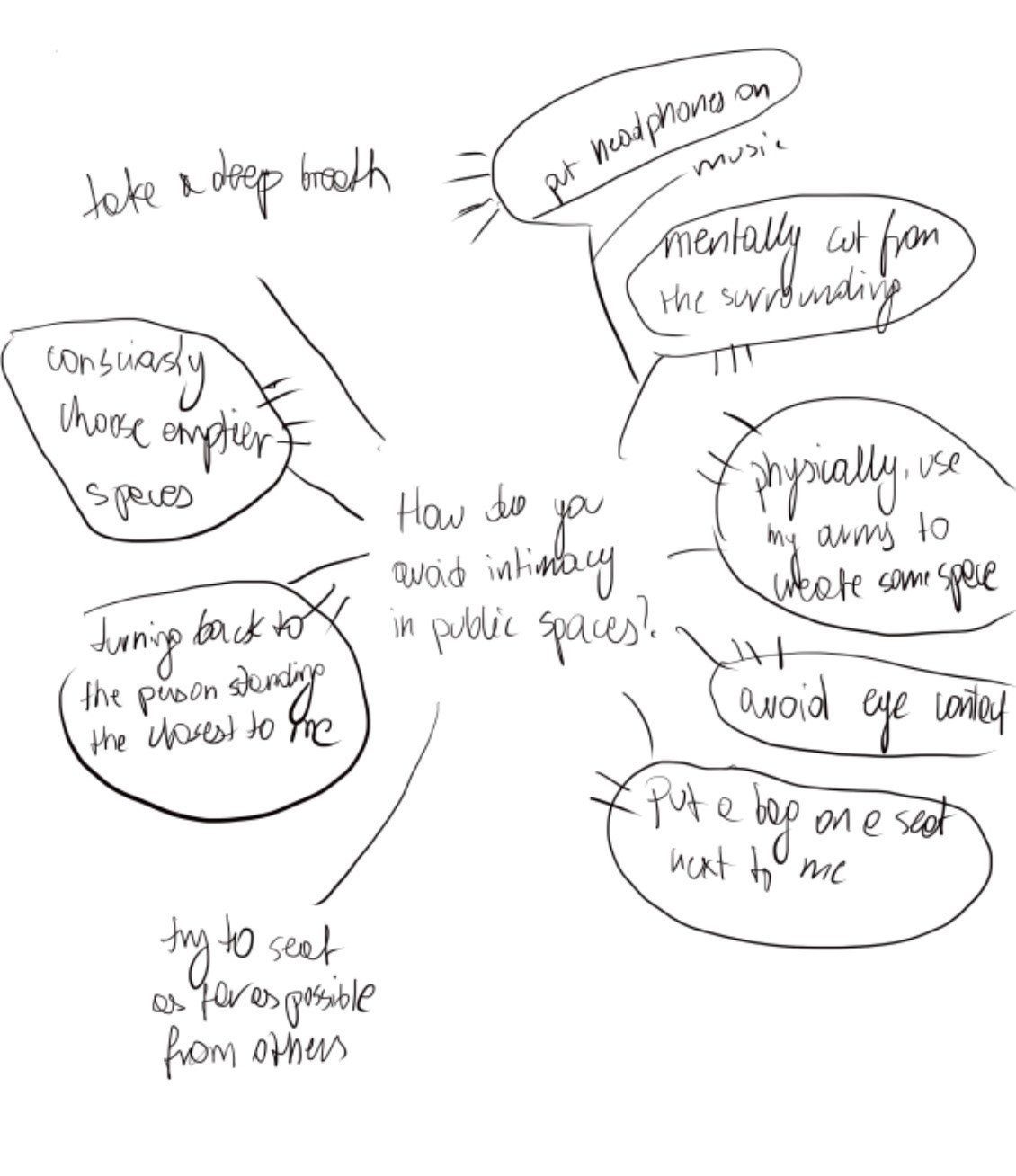
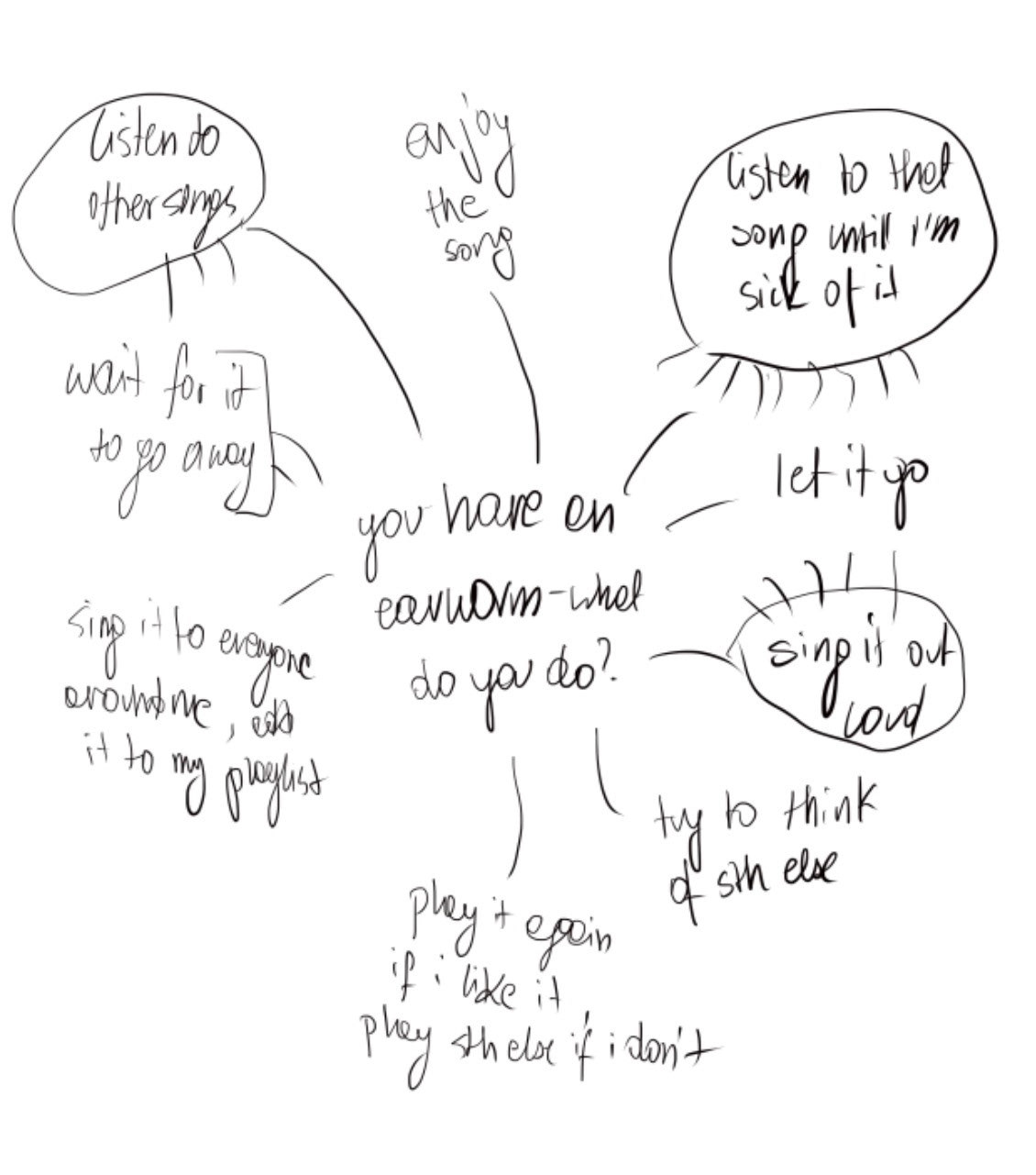
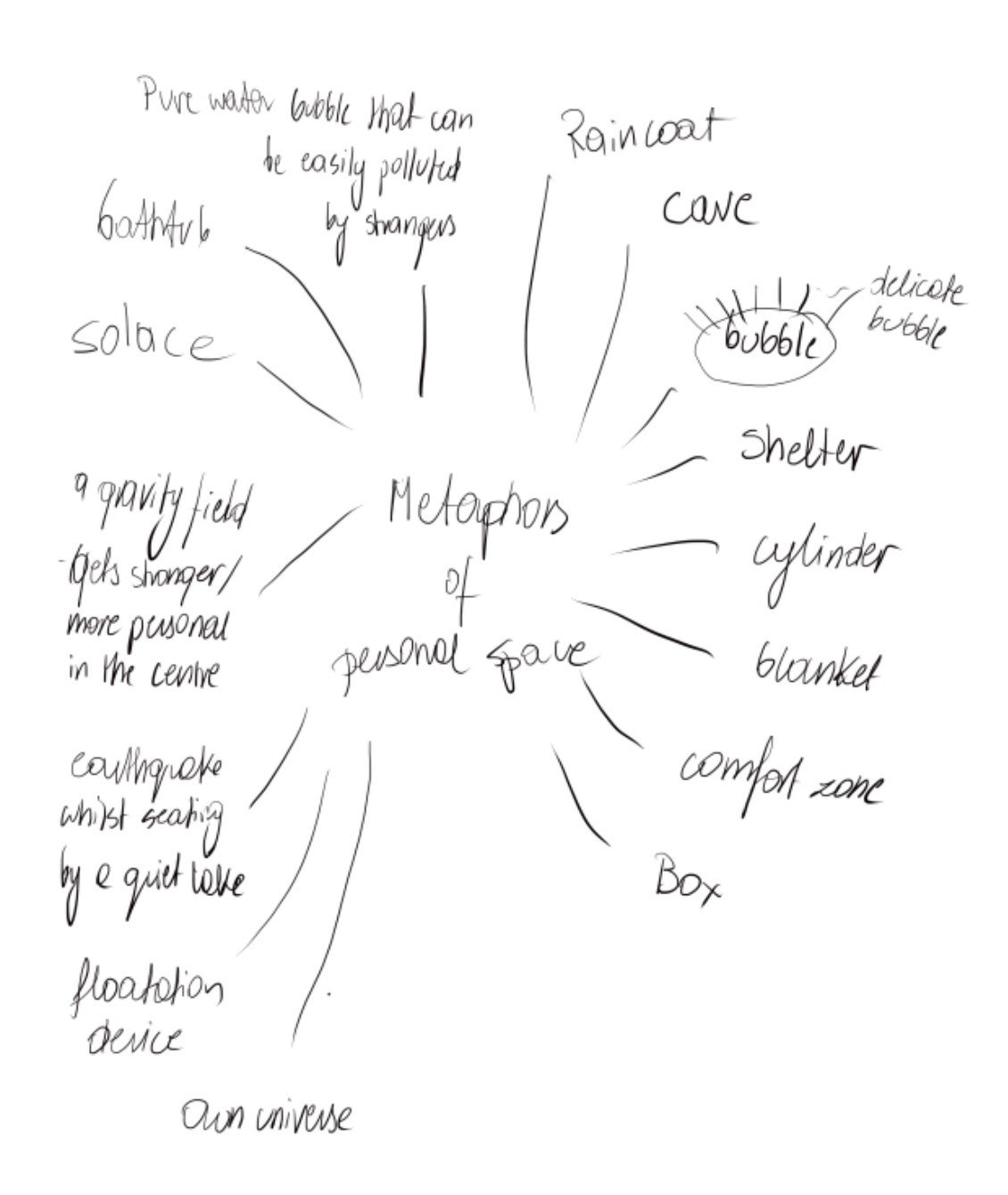
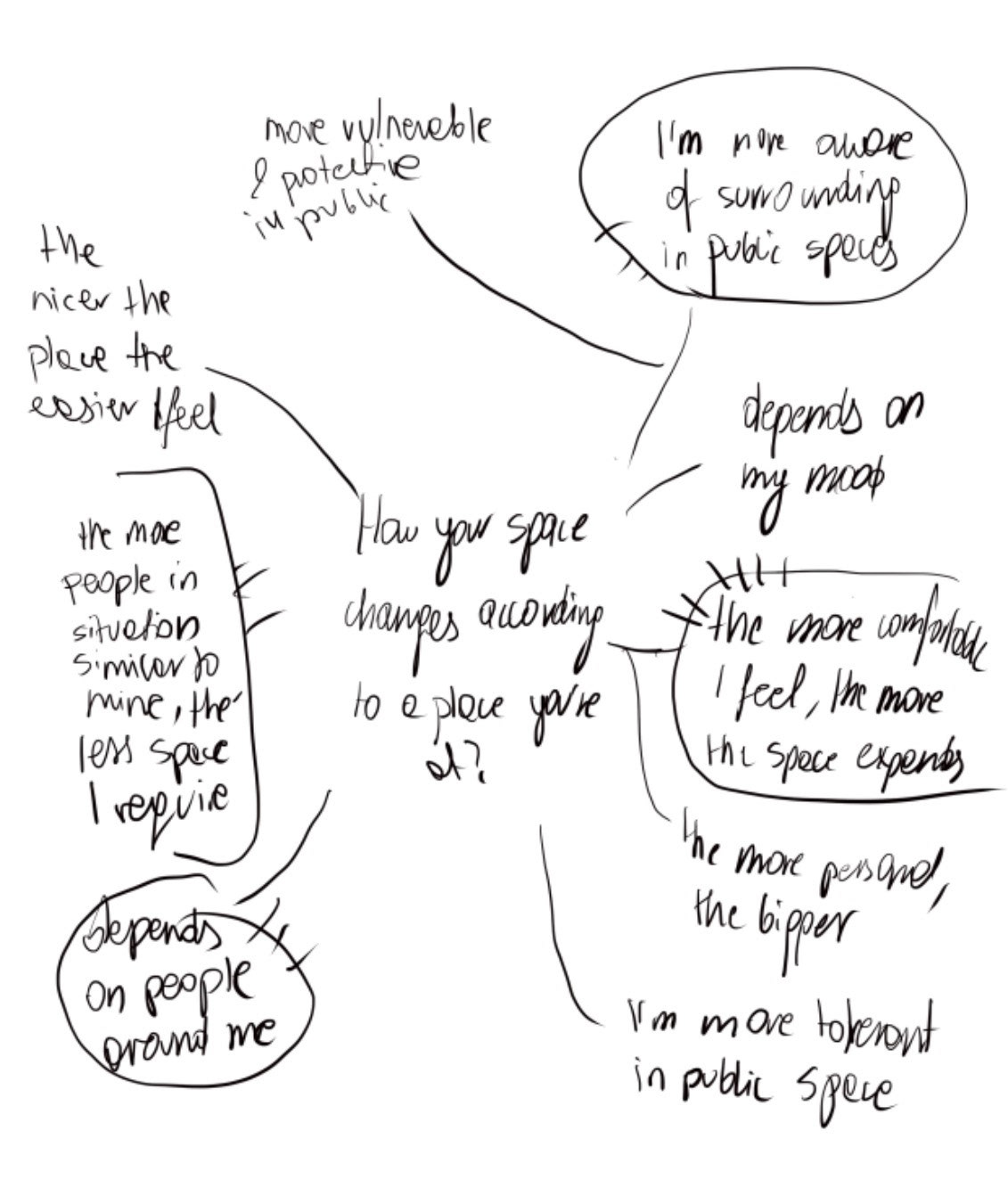


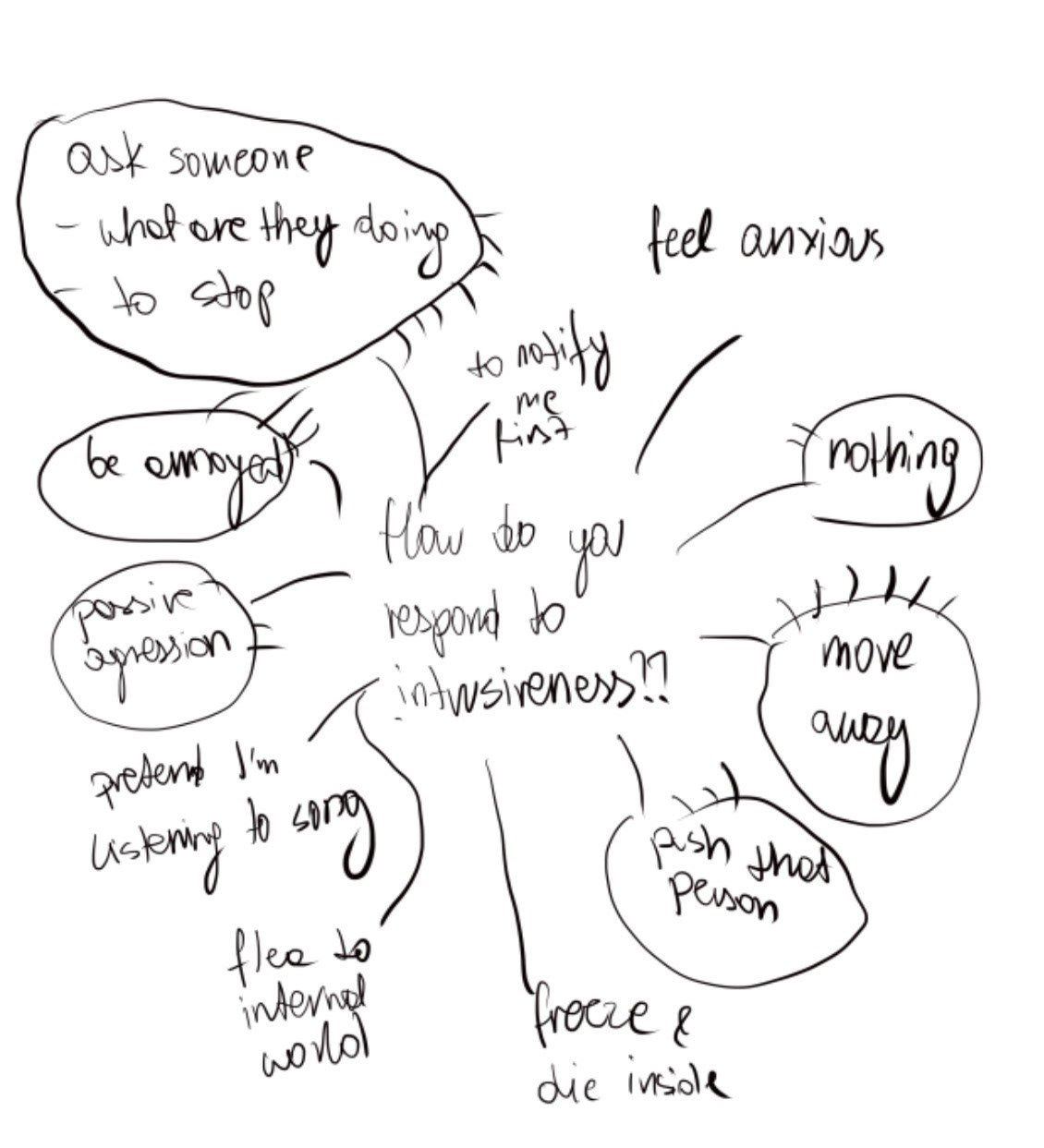


The synthesised results of the survey. Illustrated by Ula.
PRESENTATION AND FEEDBACK
Our presentation began with a hiccup - our A3 sheets with what we wanted to present were gone. Luckily, we scanned them before leaving them in the studio and were able to pull ourselves together and improvise. This week's presentations were structured as speed dating which we found to be very useful, as it gave us lots of input and feedback from everyone. In a way, it was hard for our peers to give us feedback as we didn't have anything physical or experiential other than research. Nevertheless, they've done a great job and helped us a great deal as they encouraged us to start creating. John and Al once again pointed out that there was no sound in our presentation. Using a kitchen metaphor, they told that instead of making a meal with the ingredients we have already, we went back to the store for more which pulled us back in the project development. Furthermore, our aim seemed to be too vague and too long and they were able to simplify it for us into "How do we use sound to create/demarcate/share personal space between 2 or more people?". John and Al also suggested we should try to relate the research we've done to the prototype we presented in week 4. Furthermore, they shared with us an interesting work by Scott Snibbe which really inspired us.
Boundary Functions by Scott Snibbe (1998).
BIBLIOGRAPHY
Fluegge, E., 2011. The consideration of personal sound space: Toward a practical perspective on individualized auditory experience. Journal of Sonic Studies, 1(1), pp.1–16.
Snibbe, S. (2010). Boundary Functions (1998) by Scott Snibbe. YouTube. Available at: https://www.youtube.com/watch?v=_Ax4pgtHQDg&t=10s [Accessed 11 Jun. 2021]
Zabludowicz Collection (2019). 360: Mélodie Mousset and Edo Fouilloux - Exhibitions - Zabludowicz Collection. [online] Zabludowicz Collection. Available at: https://www.zabludowiczcollection.com/exhibitions/view/360-m%C3%A9lodie-mousset-and-edo-fouilloux-1 [Accessed 11 Jun. 2021].